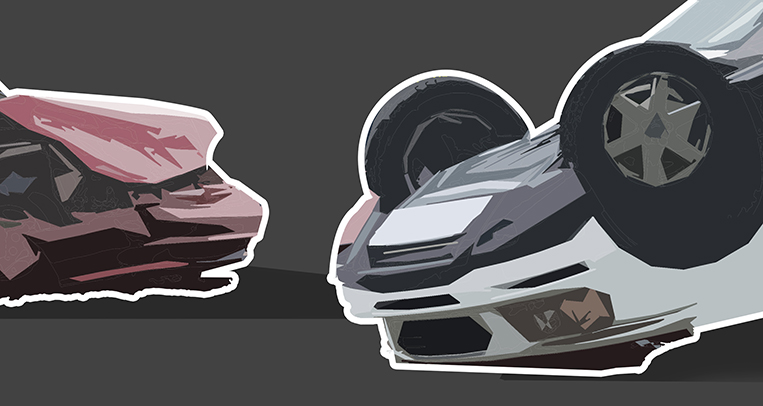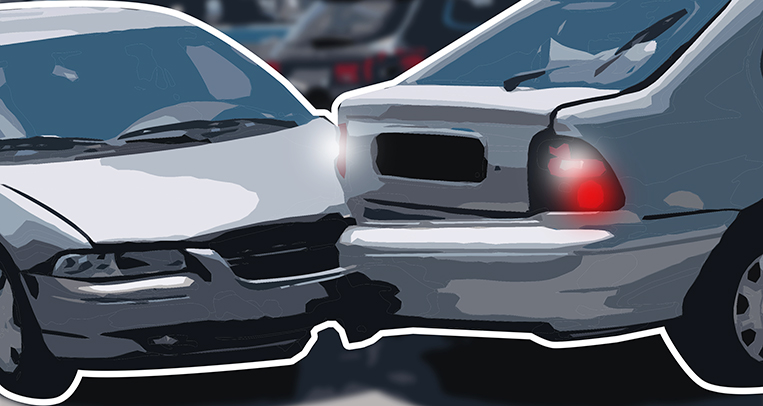
We recently published an article about how we get car-crash coverage all wrong. Too quickly, we want to get into the human-interest angle of the crash. In a motoring tragedy, there has to be a villain and there has to be a victim. Who was drunk? Unlicensed? Unregistered? Unhelmeted? But when our media reports on road crashes by playing blame games with seemingly isolated incidents, we miss the forest for the trees, and we may even be setting ourselves back.
I’ll get right to it. The Pulitzer Center and the World Health Organization recently released a guide for reporting on road crashes that has one big takeaway: Road crashes are a public health issue, and we should report on them that way. Using crash reporting as a drama platform blinds us from the bigger picture, which is that thousands of Filipinos die every year in vehicle crashes. In 2018, the number of road-crash deaths in the Philippines was north of 12,000. What made the Davao City car crash add to the number? The traditional who-what-when-where-why framework of journalism always has to be grounded in context and subject-matter expertise, or we risk getting distracted by needless drama.
Think about it. One of the worst natural disasters in recent memory was typhoon Yolanda (aka Haiyan), which killed more than 6,000 people. The amount of casualties on our roads last year nearly doubled one of the deadliest calamities in our—actually, even the entire world’s—history. Reporters who cover road crashes need to be aware that they are not just writing about human drama, they are writing about one of the greatest public health crises in the memory of humankind. What is a bigger story than 12,000 deaths of essentially the same cause—every single one of them preventable.
Reporters need to be aware that they are writing about one of the greatest public health crises in the world
I try to stay level-headed in my pieces, so please understand that what I am about to say will sound extreme to some: The correct target for road-crash fatalities is zero. I’m not saying we should gradually target getting zero road crashes 20 years from now. I’m saying we, as a society, should be targeting zero road-crash deaths tomorrow. Hell, we should have been targeting zero road-crash deaths yesterday. We should target zero road-crash deaths whether you live in Manila, Cebu, Batanes, Davao…anywhere in the world, for that matter. When a cause of death is preventable, we should make it our explicit goal to prevent all casualties. Every. Single. One. Zero.
To cover road-crash deaths in a better way, we have to understand road safety from what is called the “safe systems” perspective. Reports on road crashes often have officials quoting the cause as “driver error” of some kind. But the key tenet of the safe-systems perspective is that human error is inevitable—humans are obviously not perfect, so why should the news stop there? We have to ask more questions, like: What is the context behind this crash that made human error more or less likely, and more or less deadly? Rather than blaming the people involved, why don’t we learn about why this crash happened and how we can prevent similar crashes from happening in the future?

What do we know about getting road-crash deaths to zero? There are a number of low-cost, proven methods to reduce the incidence and deadliness of road crashes, methods that are generally applicable in many contexts. The first thing is to get people to drive more slowly on our streets. This should be accomplished by both the enforcement of speed limits and the safe design of streets (either by themselves will not be as effective). Second, we should build better infrastructure for vulnerable road users. Sidewalks and protected bicycle lanes help motorists to not kill people, and protected bicycle lanes have been shown to make roads safer even for drivers. Finally, better driver-licensing procedures can help make sure that drivers—those with the greatest power on the road—are operating vehicles safely. Crack down on corrupt license issuance and make it easier to lose a license for irresponsible driving behavior. Our government can get started on this stuff tomorrow, and we really should have started years ago.
Of course, nothing written here is to discount personal responsibility. We need to exercise caution not to operate motor vehicles when we’re physically unable to—such as when we’re drunk. We need to take measures to make sure that untrained children are not sneaking out and driving our cars and motorcycles when we’re not looking. But we all have a personal responsibility to do our civic duty and make our society better. We cannot easily ask some people—such as the elderly and the disabled—not to drive, when the alternatives are much worse in our inhumane transportation system. In this case, it means all of us, especially the media, must hold the government accountable for inaction on one of the gravest health crises of our time. Our lives depend on it.











Comments